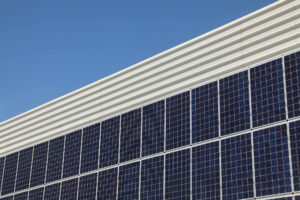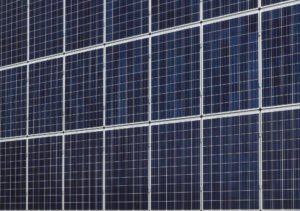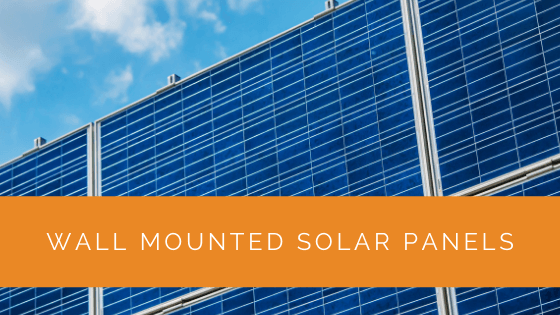Discover the future of sustainable energy with wall-mounted solar panels. This cutting-edge solution offers many advantages for environmentally-conscious individuals and homeowners seeking to reduce their electricity bills. This comprehensive guide delves into wall-mounted solar systems, exploring their benefits, installation process, maintenance requirements, and associated costs. If you’re considering harnessing the sun’s power to meet your energy needs, this article will provide you with essential insights and considerations to make an informed decision.
As we explore the benefits, installation methods, and maintenance nuances of wall-mounted solar panels, you’ll understand their potential to reduce your carbon footprint and significantly lower your electricity bills. Additionally, we’ll delve into alternative options like building-integrated solar PV panels for those seeking a discreet and aesthetically pleasing solar solution. Join us on this journey towards a sustainable and energy-efficient future with wall-mounted solar panels as your guide.
Contents
- 1 Key Takeaways
- 2 Benefits of Wall-Mounted Systems
- 3 Installing Wall Mounted Panels
- 4 Wall Mounted Solar Panels Electricity Production vs Roof Mounted Solar Panels
- 5 Maintenance of Wall Mounted Solar Panels
- 6 Cost of Wall-Mounted Solar Panels
- 7 Building-Integrated Solar PV Panels
- 8 Frequently Asked Questions
- 9 Case Study: Enhancing Energy Efficiency with Wall-Mounted Solar Panels
- 10 Expert Insights From Our Solar Panel Installers About Wall Mounted Solar Panels
- 11 Discover the Power of Solar with Solar Panels Network
- 12 Summing Up
Key Takeaways
- Wall-mounted solar panels offer an alternative to roof-mounted panels and have benefits such as reducing carbon footprints and lowering electricity bills.
- Proper installation is crucial for wall-mounted panels, requiring strategic placement and special mounting hardware to maximise energy absorption.
- Maintenance for wall-mounted solar panels is easier than roof-mounted ones, but fixing or replacing them can be challenging and should be done by professionals due to technical complexities and safety concerns.
Benefits of Wall-Mounted Systems
The wall-mounted systems offer several benefits over the ground-mounted system or even the roof-top ones.
Here are the two major ones:
- These systems reduce your carbon footprint.
- They decrease your electricity bills considerably.
Installing Wall Mounted Panels
These are typically installed as solar panel modules on a south-facing wall. If you don’t install these on a south-facing wall, you will likely face trouble generating electricity. The wall-mounted systems already have a few drawbacks because of their slight slope.
Wall-mounted solar panels have a slope or are vertically placed even if tilted slightly. Due to this, the energy absorption is maximum when the sun is the lowest.
To maximise energy absorption, you need to make sure to install the wall-mounted systems strategically. You can do this by placing the solar panels directly parallel to the wall, tilting them away from the wall or overhanging them.
The natural slope of wall-mounted solar panels requires special mounting hardware to ensure security. They aren’t as easy to install as roof-mounted solar panels that lay flat. Securing wall-mounted ones is crucial to avoid accidents and mishaps.
Precautions
If you cannot drill a hole into a wall, you can ask the technicians to install it using planks instead. However, make sure you check with the UK Government regulations first. They might allow it in some areas, while a few regions may be disbarred.

Wall Mounted Solar Panels Electricity Production vs Roof Mounted Solar Panels
Some say that wall-mounted solar systems produce less electricity than roof-mounted ones. However, this mostly depends on the time of the year and your location.
Most of the time, the wall-mounted solar panel system will produce more energy during the winter. In the summer, they won’t generate electricity as much. This is because, during the winter months, the sun is at its lowest. More direct sunlight will be hitting the tilted solar panel angles.
Therefore, during the summertime, ground-mounted solar panels and roof-mounted ones generate more electricity due to the sunlight directly hitting their slightly sloped panels than the high slope ones of a wall-mounted panel system.
Maintenance of Wall Mounted Solar Panels
Compared to the ground-mounted solar panels and the roof-mounted ones, the maintenance of the wall-mounted system is easier. Worry not if you’re worried about dirt, snow, and other impurities building upon the panel system.
Most often, the rain washes everything away. If you’re not getting any rain, then the vertically high slope of the wall-mounted systems will prevent anything from piling up due to gravity.
Their maintenance also doesn’t require you to climb up a roof as it does with roof-mounted panels. This can be difficult for many people, and wall-mounted solar panels are usually easy to reach.
A Drawback to Its Maintenance
Replacing or fixing is a major drawback to the wall-mounted panels’ maintenance. It can be not easy if your solar panels break down and require fixing or replacing. This is because professional individuals must construct scaffolding from the top. You shouldn’t try this step alone since it’s too technical for most individuals.
Cost of Wall-Mounted Solar Panels
The cost of wall-mounted solar panels will be considerably high due to the specific mounting equipment required. There are many safety concerns associated with installing solar panels, and because of this, you should expect high installation costs.
Factors Deciding Your Cost
There are a few factors that decide your electricity costs, and they are as follows:
- Where you are located
- The installation process
- The materials your solar cells are made of
- The technology your solar system has
- The extra features that come with it
Building-Integrated Solar PV Panels
One of the drawbacks to wall mounts is that they are usually more visible than roof-top ones or ground-mounted panels. However, if you have limited roof space and no other option, there is a possible solution to this problem.
Building-integrated solar PV panels are a unique type of solar PV system disguised according to the wall. They use materials that integrate with the wall or even windows.
These specially designed solar PV systems have solar cells sprayed with a little bit of amorphous silicon, creating a PV layer. This helps to generate electricity and allows for light to pass.
These solar PV panels are a great solution for those individuals who don’t want their panels to be too visible on the national grid.

Frequently Asked Questions
What Should a 4kW Solar System Generate per Day?
A 4kW solar system is the most commonly used system in the UK. The output of a solar system depends on several things, such as your location, the slope angle, the quality of materials and much more.
Since a solar panel system produces 2.5 kWh per kW, multiplying 2.5 by 4 gives you an output of 4kW. Therefore, the 4kW solar system should generate 9.5kWh per day.
What Is the Best Direction for Solar Panels to Face?
In the UK, the best direction for solar panels to face is the south. This is because, in the south, the energy absorption of the solar panels is at its maximum. The absorption levels will fall as soon as it moves away from the south.
What Is the Size Requirement of Solar Panels?
There’s a simple formula to calculate the size of solar panels. All you need to do is multiply your household’s energy consumption per hour by the sunlight hours at its peak in your area and divide this by a panel’s wattage. You’ll get the size of solar panels according to your requirements.
Case Study: Enhancing Energy Efficiency with Wall-Mounted Solar Panels
Background
Solar Panels Network recently worked with a homeowner in a densely populated urban area in the UK, where traditional roof space for solar installations was limited. The client was eager to adopt solar energy to reduce electricity bills and lower their carbon footprint. Given the constraints, we recommended wall-mounted solar panels as a viable solution.
Project Overview
The client wanted to maximise their energy production despite the limited roof space. The main objectives were to install a solar energy system that could provide significant electricity generation and to explore options for minimising visual impact while ensuring system efficiency. Our team was tasked with designing and implementing a wall-mounted solar solution tailored to these requirements.
Implementation
- Site Assessment: Conducted a thorough assessment of the property’s south-facing wall to determine the optimal placement for the solar panels, ensuring maximum sun exposure throughout the year.
- System Design: Designed a custom wall-mounted solar panel array using high-efficiency panels. The system was configured to be slightly tilted away from the wall to enhance energy absorption, particularly during the winter months.
- Installation Process: Utilised specialised mounting hardware to securely attach the panels to the wall, complying with all safety regulations and ensuring structural integrity. The installation also included an inverter system to convert the generated DC power into usable AC electricity.
- Aesthetic Integration: Considered the aesthetic aspect by integrating the panels into the building’s facade, using building-integrated photovoltaics (BIPV) where possible to minimise visual impact.
Results
- Energy Production: The installed wall-mounted system achieved an average daily production of 8 kWh, covering a significant portion of the household’s electricity needs. The system performed exceptionally well during the winter, thanks to the optimal angle adjustment.
- Cost Savings: The client experienced a noticeable reduction in electricity bills, projecting a return on investment within eight years. The use of BIPV also enhanced the property’s aesthetic appeal, potentially increasing its market value.
- Environmental Impact: The system reduced the household’s carbon footprint by approximately 1.5 tonnes of CO2 annually, aligning with the client’s sustainability goals.
Summary
This case study demonstrates the practicality and benefits of wall-mounted solar panels, especially in urban settings where roof space is scarce. The project highlighted the importance of careful planning and specialised installation techniques to optimise energy production and aesthetic integration. By choosing wall-mounted panels, the client not only reduced their electricity costs but also made a positive environmental impact. The project’s success underscores wall-mounted solar panels’ potential as a viable alternative for sustainable energy solutions, offering a balance of functionality and design.
Expert Insights From Our Solar Panel Installers About Wall Mounted Solar Panels
Wall-mounted solar panels are a fantastic alternative for homes with limited roof space. They can effectively harness solar energy, especially when installed on south-facing walls, to maximise sun exposure. The key is to ensure they are securely mounted and strategically positioned.
Lead Solar Installation Engineer
One of the benefits of wall-mounted systems is their easier maintenance compared to roof-mounted panels. They are more accessible for cleaning and inspections, which can help maintain optimal efficiency over time. However, installation can be more complex and may require specific mounting equipment.
Senior Solar Consultant
While wall-mounted panels might produce slightly less energy than roof-mounted ones during the summer, they can be particularly efficient in the winter when the sun is lower in the sky. It’s crucial to consider these seasonal variations when planning your solar installation.
Renewable Energy Specialist
Discover the Power of Solar with Solar Panels Network
Are you navigating the world of solar installations? Look no further than Solar Panels Network, the UK’s trusted partner in harnessing the sun’s potential. Our dedication goes beyond just installations; we’re on a mission to transform how homeowners and businesses across the UK perceive and utilise energy. By choosing us, you’re reducing your carbon footprint and making a smart financial move that promises savings for years ahead. Contact us today and embark on your solar journey.
Summing Up
Switching to wall mounts may be your next best investment that can power all your household appliances and other energy needs. However, it takes considerable thought since it’s a high-cost investment.
There are a few limitations to this technology, but there are also solutions to it, but it requires more effort. You might even need to put in the money, but rest assured; it’s an investment you won’t ever regret and comes with numerous benefits.
About the Author
Solar Panels Network stands at the forefront of solar energy solutions, driven by a team of seasoned solar engineers and energy consultants. With over decades of experience in delivering high-quality solar installations and maintenance, we are committed to promoting sustainable energy through customer-centric, tailored solutions. Our articles reflect this commitment, crafted collaboratively by experts to provide accurate, up-to-date insights into solar technology, ensuring our readers are well-informed and empowered in their solar energy decisions.

